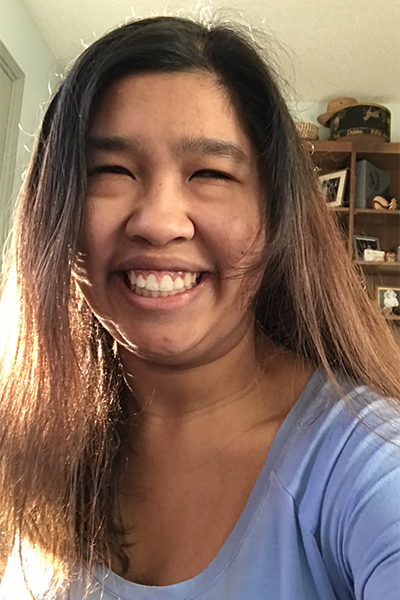3D model conveys course concepts to visually impaired student
Everyone agrees the doughnut is fundamental.
But Fatima Quintana ’24 couldn’t see it, couldn’t make sense of the circular chart and the material written on and around it.
So the Student Office for Accessibility Resources (SOAR), the facilities department and Quintana’s professor collaborated to deliver a three-dimensional model labeled with Braille text.
“Our whole major is built on this framework,” said Geoffrey Habron, professor of sustainability sciences. “Everything is based on this doughnut.”
The circular model defines the department’s stance on sustainability science, visualizing the relationship between the environment and social foundations.
“This is fundamental, and I don’t know how to convey this” to a student who can’t see it, Habron said.

Fatima Quintana ’24.
“He references it all the time,” Quintana said. And now, “I can actually follow along when he’s talking about it.”
SOAR’s mission is to identify and remove barriers on campus. About 400 students currently are registered with the office. Of those, some self-disclose a disability for one-time assistance, perhaps with an issue such as housing. About 220 students engage regularly with SOAR staff members for support.
Jessica Lane, accessibility specialist, reaches out to faculty members who have students with visual impairments and collects textbooks and other materials so she can remain ahead of them, whether that means printing materials in Braille or finding digital versions.
Her first attempt to make the doughnut accessible for Quintana was a Braille model on paper. It didn’t work, and Lane knew she needed to try a three-dimensional approach.
“But then I knew my own limitations – I didn’t have the materials or know-how to work with wood,” she said.
The obvious next step was the facilities department, which had solved problems for SOAR in the past, including developing a sound-proof cabinet for SOAR’s Braille printer.
“Their work is just top-notch,” said Judy Bagley, director of SOAR. “They’re so talented.”
There was a Zoom meeting to explain the situation and introduce the paper diagram, then Larry Cox, a Furman carpenter, did most of the work.
“We get it in our head and we can make it happen,” Cox said. “It’s a great satisfaction.”
The model is about 12 inches wide – Braille text takes up about four times the space of traditional print. And Quintana loves it.
“I wanted to make sure I was properly learning it,” she said. “Description is great, but at the same time, I’m a tactile learner.”
Quintana, who is majoring in political science and international affairs, has no vision in her left eye and limited vision in her right. She sometimes uses audio materials.
“But I prefer when I can get my hands on a Braille copy, just because I retain information better and understand it more,” she said.
Quintana has appreciated Habron’s willingness to learn new ways to convey information. To his knowledge, she is the first visually impaired student he has had in a class.
“I love how curious he is about it and how willing he is to work with you,” she said. “It just means a lot.”
For SOAR, it’s another day, another doughnut.
“We are often trying to find solutions to accessibility barriers,” Bagley said. “It’s not often that we have to involve as many offices as we did this time.”